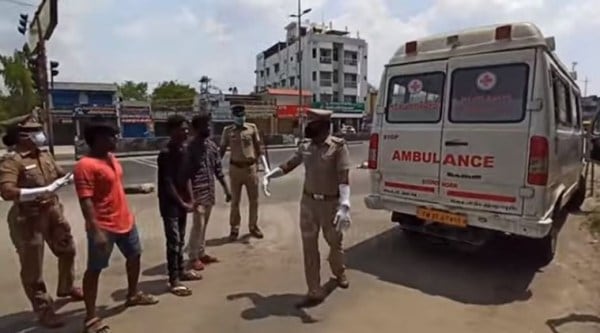 Of its 203 cases reported on Friday, 176 were from Chennai alone. The city also accounts for 16 of its total 28 deaths. On Thursday, a 27-year-old pregnant woman died in Chennai.
Of its 203 cases reported on Friday, 176 were from Chennai alone. The city also accounts for 16 of its total 28 deaths. On Thursday, a 27-year-old pregnant woman died in Chennai.
One of the worst-hit states around mid-April, with the largest numbers after Maharashtra and with 37 of its 38 districts reporting coronavirus, Tamil Nadu has since turned a corner. With a similar population as Gujarat, it has nearly half its cases and one-eighth its deaths. Just five-six districts are now reporting cases, while Coimbatore, which once had the most patients, has had no fresh cases for about a week.
What has helped the state keep the numbers relatively low (2,526 cases, 28 deaths, as of Friday evening), after a sudden surge, is its health network. Starting from welfare policies in the 1950s, and despite bitter transfers of power between parties, the state has in place a system of quality and affordable healthcare.
Of its 203 cases reported on Friday, 176 were from Chennai alone. The city also accounts for 16 of its total 28 deaths. On Thursday, a 27-year-old pregnant woman died in Chennai.
The inter-ministerial team sent by the Centre that visited Tamil Nadu observed on Thursday that its recovery rate was “very good”, with 54% of patients. Its case fatality rate, of 1.2%, is also less than half the country’s (around 3%).
The state has 25 government medical colleges with another 11 being built in districts. Its Maternal Mortality Rate is 16, against Andhra Pradesh’s 32 and Gujarat’s 30, for example, while its Infant Mortality Rate stands at 2, compared to Andhra’s and Gujarat’s 13 and 11, respectively. Neighbouring Kerala may be the only state better than it on these vital indicators.
Like Kerala, Tamil Nadu, which has a huge diaspora in Southeast Asia, was among the first to start screening passengers arriving at airports. It began this in January last week, when news of the coronavirus outbreak was just coming out of China.
Tamil Nadu got its first COVID-19 case on March 7, an engineer who had returned from Oman. Its second case, on March 18, was of a migrant worker who had arrived from Uttar Pradesh, with the possibility of tracing the source of his infection, including on a train ride, a logistical nightmare. But what really set off the scare in the state and set its numbers zooming were the returning members of the Tablighi Jamaat congregation from Delhi. At one time, 90% of its cases had links to the Tablighi Jamaat. That proportion has fallen to 60% now with a vegetable market at Koyambedu, Chennai, one of the largest in the country, emerging as a new cluster.
State Health Secretary Beela Rajesh said it was surveillance and continuous monitoring that helped them limit the numbers. “We have many people in public health and all of them worked together,” she said.
A senior police officer said, “We acted quickly when we realised that over a thousand people had attended the Delhi conference of the Jamaat. Hundreds of Call Detail Records were reviewed, details shared across district officials, coordination was done by senior officials from Chennai and, in two or three days, we had traced all of them, including those who reported on their own.”
He added that unlike in Kerala, where the government sought the help of public too to trace people, here officials handled it themselves. “As some people were trying to use the Tablighi link for communal purposes, we did not share contact-tracing details on social media. We called each of them individually, sought the help of community leaders.”
A senior state secretary said another step that helped was ensuring that there was no mass exodus of migrant workers. “Local bodies were quick to provide shelter and food,” the secretary said.
Tamil Nadu is currently running 576 community kitchens for a total of 1.18 lakh people. Its 245 Amma Canteens record an average footfall of 3.12 lakh people daily.
Dr Amalorpavanathan Joseph, the man behind Tamil Nadu’s organ donation system, seen as the best in the country, also lauded the state’s public health system, PHCs and community health networks. However, he said, “confusing ad-hoc measures” over lockdown could have been avoided. “Complaints from frontline workers about poor facilities and safety measures could have also been addressed,” Joseph said.
Dr R Ramakrishnan, who earlier headed the National Institute of Epidemiology, said where Kerala scored over Tamil Nadu was in the experience it gleaned from handling the Nipah virus outbreaks the past two years.
T Sundararaman, former director of the National Health Systems Resource Centre, said both Kerala and Tamil Nadu could have done better in monitoring severe acute respiratory infections (SARI) and influenza-like illnesses (ILI).
With 109 cases still a worry, as their source of infection has not been traced, Health Secretary Rajesh said they were focusing on SARI and ILI now. “We have been watching such cases since March. We have been testing all of them,” she said.